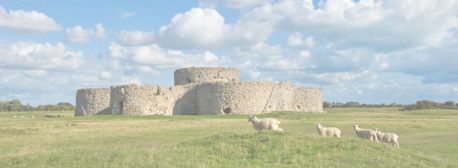

Glencoe Farm Bed and Breakfast
Glencoe Farm
West Undercliff
Rye
East Sussex
TN31 7DX
Tel: +44 (0) 1797 224347
Mobile: +44 (0) 7540 419581
Email: glencoefarm@f2s.com
West Undercliff
Rye
East Sussex
TN31 7DX
Tel: +44 (0) 1797 224347
Mobile: +44 (0) 7540 419581
Email: glencoefarm@f2s.com





Four hundred years ago, John Cheston decided to demolish his house, overlooking the cemetery of St Mary’s church in Rye. He’d just removed the first roof tiles when a cry came from the burghers below, ‘Desist, thou scurvy varlet! Thou despoileth our streetscape and wrecketh our potential tourism industry.’ The city fathers invoked a 1606 heritage law, thus sparing Mr Cheston’s house, and securing Rye’s future as a centre for artists, writers, musicians and miscellaneous bohemians.
It has become a perfect location for filming British costume dramas and a very popular short trip out of London.
An elegant white windmill neatly balances the cluster of black wooden huts where fisherman used to hang their nets. Steep, narrow streets wind between houses with the Tudor timber frames and slate roofs we tourists love.
The battlements of Ypres Tower and Landgate Arch, and the aforementioned St Mary’s church are striking remnants of the town’s medieval past.
Rye was once a major harbour for warships, an important member of the Cinque Ports, and given the title ‘Rye Royale’ by Elizabeth I, but eventually the sea gave up the battle against the silt and beat a retreat.
Rye claims to be England’s best preserved village. The Ryers (or ‘Mud Heads’ as they’re uncharitably known in the rest of Sussex) have been particularly sensitive about building conservation since 1377, when some rowdy Frenchmen cruised across the Channel, literally set the town alight and stole the church bells as souvenirs.
A heavily-armed delegation paid France a return visit and brought the bells back. Rye was restored to its former glory and now boasts more historic buildings than any town in Britain.
It’s all very genteel these days, but Ryers also take pride in their grimy past, the smuggling era in particular. Rye was the haunt of the ‘owlers’, as smugglers were known in the eighteenth century. In dark back rooms, deals were done on smuggled liquor, tea and luxury goods, and also on wool.
It has become a perfect location for filming British costume dramas and a very popular short trip out of London.
An elegant white windmill neatly balances the cluster of black wooden huts where fisherman used to hang their nets. Steep, narrow streets wind between houses with the Tudor timber frames and slate roofs we tourists love.
The battlements of Ypres Tower and Landgate Arch, and the aforementioned St Mary’s church are striking remnants of the town’s medieval past.
Rye was once a major harbour for warships, an important member of the Cinque Ports, and given the title ‘Rye Royale’ by Elizabeth I, but eventually the sea gave up the battle against the silt and beat a retreat.
Rye claims to be England’s best preserved village. The Ryers (or ‘Mud Heads’ as they’re uncharitably known in the rest of Sussex) have been particularly sensitive about building conservation since 1377, when some rowdy Frenchmen cruised across the Channel, literally set the town alight and stole the church bells as souvenirs.
A heavily-armed delegation paid France a return visit and brought the bells back. Rye was restored to its former glory and now boasts more historic buildings than any town in Britain.
It’s all very genteel these days, but Ryers also take pride in their grimy past, the smuggling era in particular. Rye was the haunt of the ‘owlers’, as smugglers were known in the eighteenth century. In dark back rooms, deals were done on smuggled liquor, tea and luxury goods, and also on wool.














